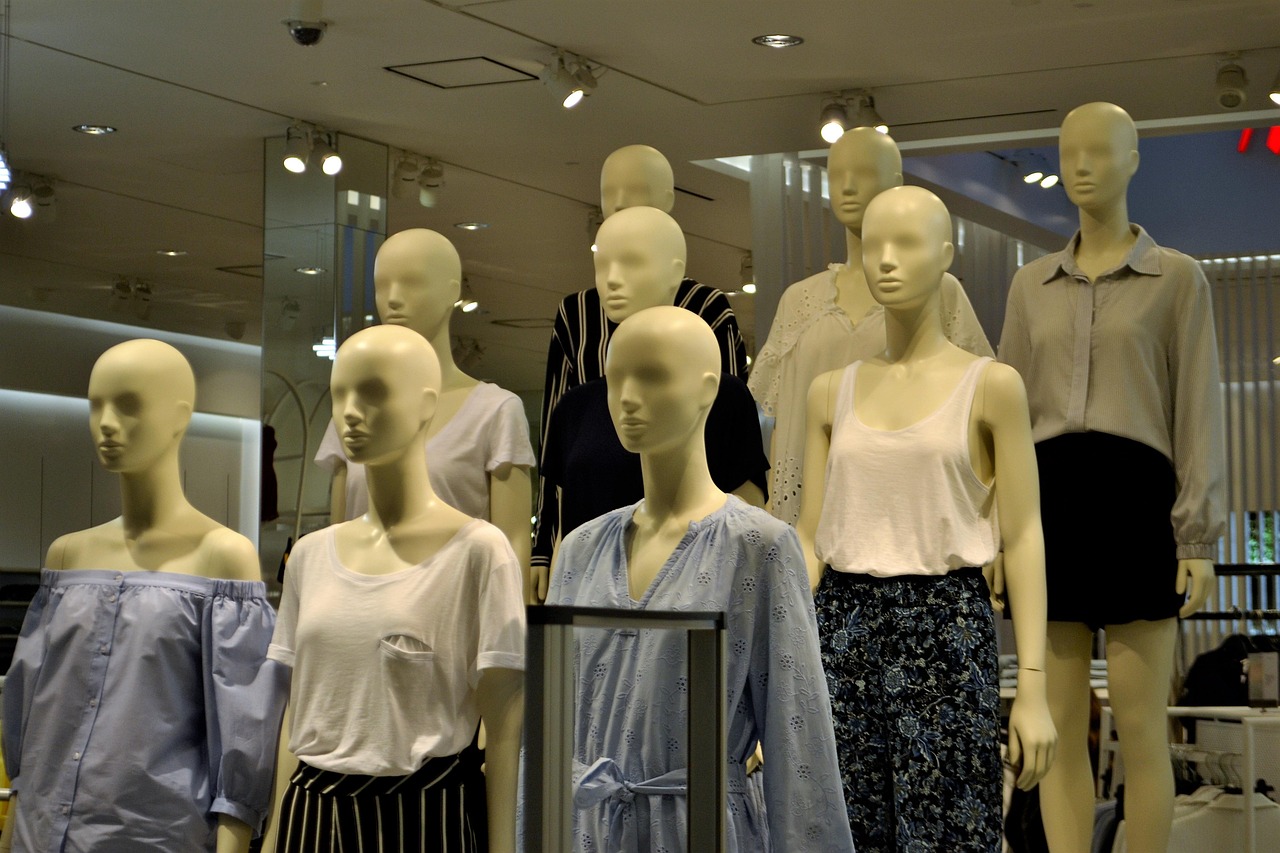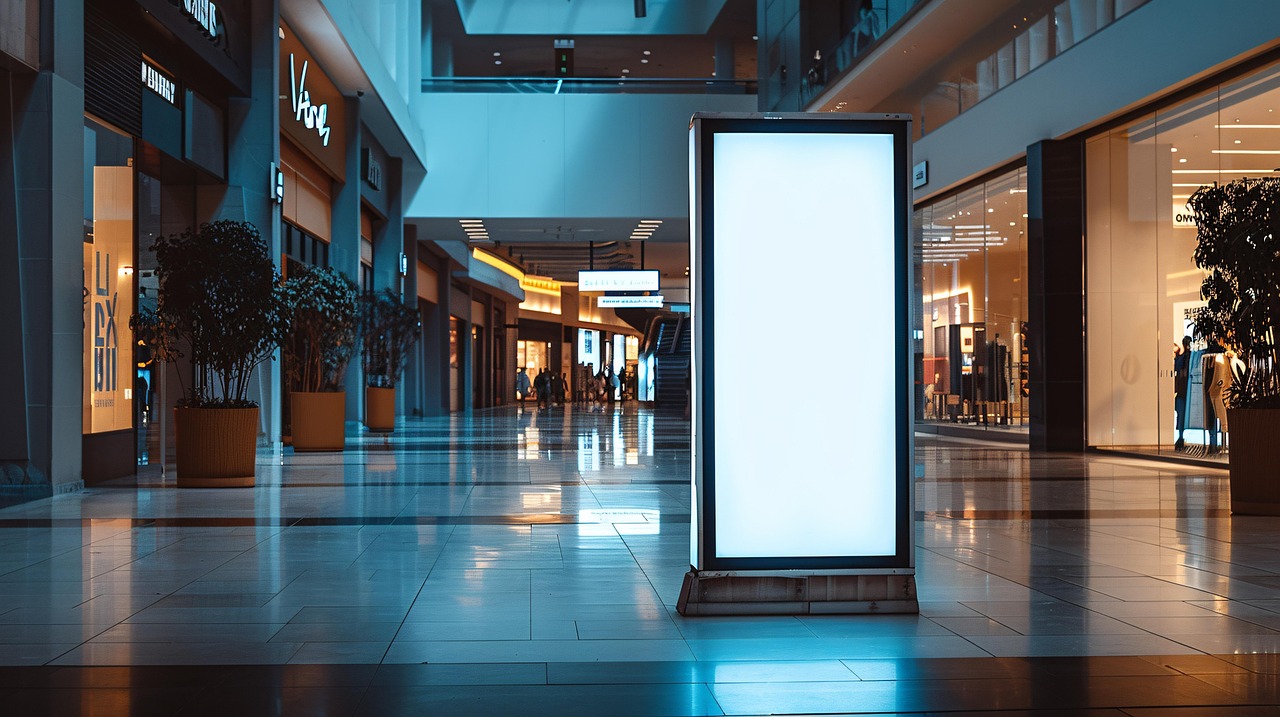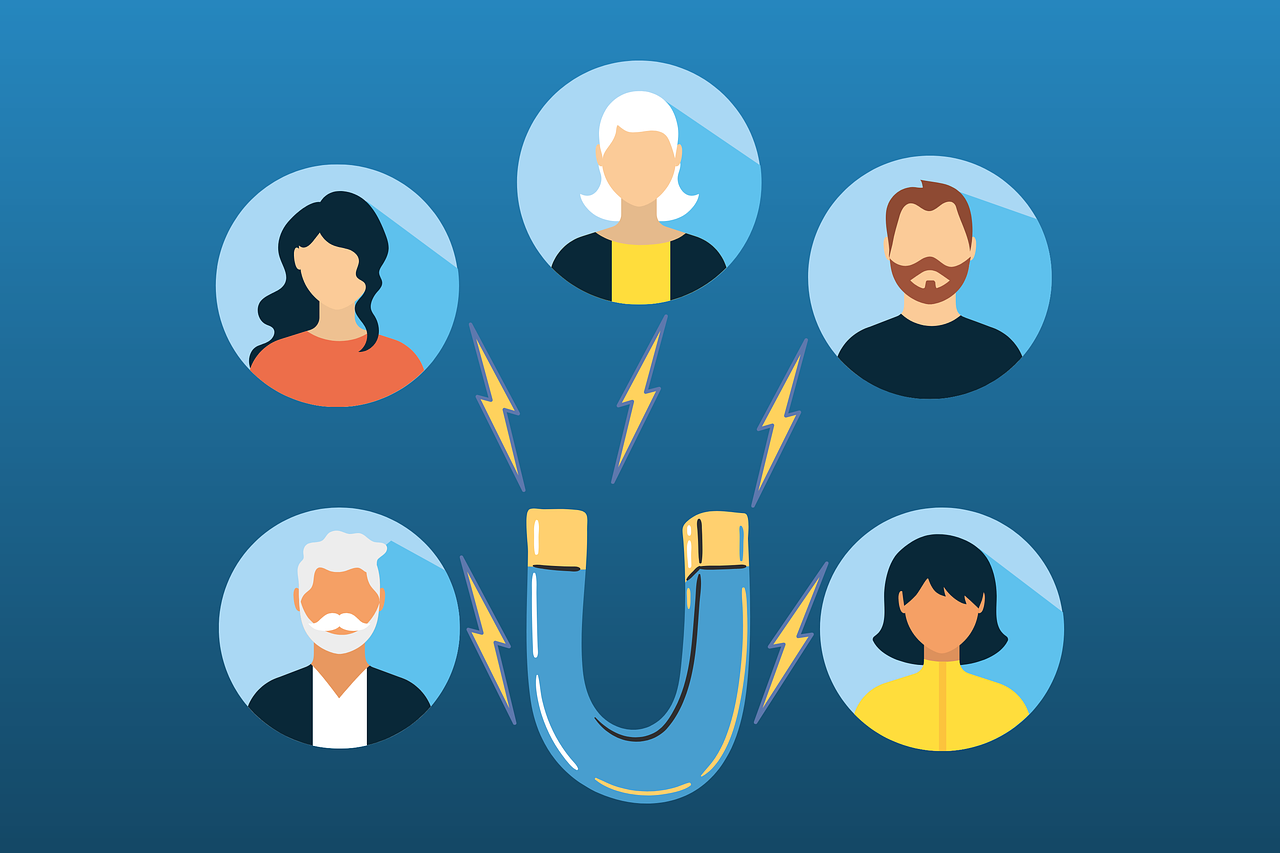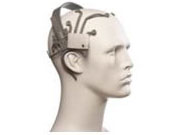04
Jun

Perhaps there is no better example of market research in play than the utilization of artificial intelligence in retail. AI has disrupted industries after gaining traction and mainstream popularity just in the last few years, but its transformative power is arguably most visible in the retail landscape. From personalized shopping experiences to visual merchandising, we’ll take a look at the impact AI has had so far not only on the retail industry, but also on retail market research today.
Personalized Shopping Experience
We’re now at the point where customers expect brands to not only acknowledge them but understand and cater to their preferences. Retailers have traditionally prized such insights as vital to conversion rates, marketing campaigns, and brand loyalty. AI is in the perfect position to deliver these insights at a more incisive and actionable level. By analyzing a customer’s data such as browsing history, purchasing behavior, preferences, wishlists, and shopping cart items, AI is able to create personalized and tailored recommendations that help simplify the shopping process and guide consumers toward better purchasing decisions, thus contributing to a more enjoyable shopping experience. In fact, a McKinsey report found that 35% of Amazon purchases were due to personalized recommendations.
Aggregate customer data of this type helps shape the direction of a brand’s marketing campaign by identifying and homing in on the ideal customer for a particular product or service, reducing traditional marketing costs while optimizing conversion. This also extends to lead generation as the customer data gathered from transaction history and personal preferences can help form a prospect list for future products and campaigns.
The extensive data of browsing and purchase history along with personal preferences also benefits product searching and product description generation. The former means that AI is able to produce highly accurate site search results based on context and intent even if a customer struggles with the appropriate keywords for the product they’re looking for. The latter saves time and increases efficiency by generating comprehensive, unique and engaging product descriptions that are also SEO-optimized, especially when combined with product image analysis and natural language processing.
Loyalty and rewards programs can also be made more effective with incentives and exclusive deals aligned to a customer’s taste and preferences over generic, random, and unenticing offers, encouraging engagement and increased or repeated visits or spending while also improving retention.

Copyright: Pexels
Dynamic Pricing and Promotions
Retailers are now able to unlock another advantage with AI through dynamic pricing strategies and promotions. This ability allows retailers to adjust pricing based on real-time analysis of market conditions, competitor pricing, inventory levels, consumer demand and behavior, just to name a few factors. This can be done not only by branch or region but also on an individual level, and can take advantage of peak hours, promotional activities or clearance sales. Dynamic pricing allows retailers to maximize profits, maintain competitiveness as well as engage or retain customers looking for better deals.
Predictive Analytics for Inventory Management and Demand Forecasting
It’s important for retailers to optimize inventory management to prevent overstocks or stockouts, maximizing sales while minimizing losses. Step away from those time-consuming and fallible spreadsheets, though; AI-powered predictive analytics is now the key tool in any retailers’ arsenal for demand forecasting. By analyzing sales data based on purchasing history, market trends, inventory levels, consumer behavior and preferences, retailers are able to predict future trends to improve operational efficiency by making smart decisions with stock planning and supply chain management. This is further augmented by employing cameras, digital sensors or smart shelves to monitor inventory levels in real-time, allowing store staff to replenish shelf stock from the supply room when needed.
In-store Navigation
AI-powered chatbots and virtual assistants are helping improve customer satisfaction by assisting and guiding with site navigation and other queries, but they’re not limited to the online realm as they can also be used by physical locations. Aside from simple navigation instructions, in-store navigation can be taken to the next level with an AI-generated foot trail map optimized with the best path for navigating across the store based on the items on the customer’s shopping list.
AI can also provide valuable feedback and insights for optimizing store layout and foot traffic from the customer movement patterns it captures and analyzes. These insights can also help with the placement of particular products a store would like to promote or increase visibility of.

Copyright: TyliJura
Visual Merchandising
The days of static print and basic digital signage are slowly going out of style; retail visual merchandising is now evolving to tell dynamic and engaging brand narratives that extend from the purely informational to the experiential. Powered by AI, retail experiences now allow brands to connect and resonate with consumers more effectively than before with visual merchandising content that’s not only relevant to the buyer’s journey but also convey a strong and intelligent creative direction.
Imagine AI-powered signage that reacts or adjusts content in real time to help you with your purchasing decision at a store, especially at times when you’re looking at the shelf or aisle and not sure which brand to pick. Dynamic visual merchandising can highlight products based on current popularity or stock to influence your choice. During peak hours, this could mean you’re able to get your hands on the best-selling item before it runs out or select the product with enough available stock if you need to meet a certain quantity. Unlike manual content, which could outdate if the product presented has stocked out, AI-driven merchandising can present alternatives and introduce new brands which would otherwise have been unexplored or missed by consumers.
Emerging technologies such as virtual try-on and augmented reality (AR) add another layer to how customers interact with products. The former uses AI to simulate how clothing or accessories would look like or fit on a customer, while AR helps visualize products in different settings or styles. These technologies help reduce return rates and drive customer satisfaction and brand loyalty.

Copyright: TyliJura
We’ve touched on only a few of the current and noteworthy applications of AI in retail. There are many others, and more will likely be added in the near future as this technology continues to evolve. Embracing AI can reward a brand or company with competitive advantages and success, but the rewards aren’t necessarily reaped overnight. AI saves time, reduces costs, and optimizes sales and operations; but companies need to be strategic, adaptable, innovative, and ethical when harnessing this technology. Not only would a retailer need to invest time, effort, and resources to build the extensive data and foundational systems of their AI infrastructure, they would also need to gain an understanding of how everything connects and works with one another, as well as how it all aligns with their company’s goals.
If you’re a retail company looking for help in adopting AI in the best way possible, Cascade Strategies can assist you in this endeavor. Not only are we well versed in AI technology, we are advocates of “appropriate use of AI.” We appreciate the advantages and benefits AI brings, but we firmly believe that it’s at its most effective when harnessed and guided by human values and experience. Contact us today to learn how Cascade Strategies can help your company enrich retail operations and the shopping experience you offer to your customers with AI.
Featured Image Copyright: Demian Smit
Featured Image Copyright: ArtisticOperations
Read more
01
Nov
What Is Psychographic Segmentation?
 So you’ve completed your research on the demographics of your online perfume store and you’ve seen that women in their twenties in Seattle were your top buyers. That’s great, you thought as your mind started to work on the outlines of your next campaign targeted towards these women. However, you discovered upon going through the data one more time that your perfumes are just as popular with forty-something-year-old women in Las Vegas. And when you went to double-check again you discovered another group of women around 25 years old being ardent supporters of your perfumes, but this time they’re from New York.
So you’ve completed your research on the demographics of your online perfume store and you’ve seen that women in their twenties in Seattle were your top buyers. That’s great, you thought as your mind started to work on the outlines of your next campaign targeted towards these women. However, you discovered upon going through the data one more time that your perfumes are just as popular with forty-something-year-old women in Las Vegas. And when you went to double-check again you discovered another group of women around 25 years old being ardent supporters of your perfumes, but this time they’re from New York.
Now how do you go about your marketing given that you would need to adjust it to target your top demographic? Sure, you’ve identified your best patrons as women between 20 and 50 years old but aside from the different locations, you’re not quite sure now what else sets them apart, which could poke holes in your messaging and cause it to fail to resonate with a number of them.
This exercise shows you the limitations of demographic-based marketing. Demographics answer the question “Who are your buyers?” but in order for your efforts to become more effective, you need to go deeper by answering “Why are they buying?” And this is where psychographic segmentation comes in.
Psychographic segmentation is the process of grouping consumers according to their motivations, goals, attitudes, opinions, beliefs and other psychological factors. It helps you better understand what drives purchase decisions. Not only does psychographic segmentation allow you diversify your marketing and reach out to different groups of consumers, it also allows you to create or customize products or services to cater to the varying needs of your buyers.

Copyright Elf-Moondance (Pixabay)
Why is Psychographic Segmentation Important in Brand Building?
Going back to the earlier scenario, you decided to reach out to your target demographic through an online survey, explaining it would help you understand them and serve their needs better. Based on the responses you received, you discovered that these women between 20 and 50 years old from different states appreciated the sweet-smelling but unique line of perfumes you’ve been selling at cost-effective pricing with efficient delivery times. Thus, the messaging of your next campaign highlighted the popularity of your sweet-scented perfumes, competitive pricing, and quick delivery. And the next time the opportunity presented itself, you even went as far as offering free delivery for a limited time.
Because you’ve used psychographic segmentation to break your market into different groups, you’ve also become aware of your other customer segments, which opened up marketing strategies you could leverage towards these subsets. Let’s say one of these groups was composed of regular clients who — although they didn’t buy as much as the earlier group we’ve discussed — you discovered frequently bought a certain perfume. Upon further research, surveys, and interviews of some of the members of this segment, you found that you’re the only online perfume shop that carried this fragrance. This then allowed you to branch out with new marketing which put a spotlight on the fact that this hard-to-find scent could only be bought at your online store, tapping into more potential customers falling under this segment. This also opened up more research on what fragrances your competitors didn’t offer but which your brand carried as well as the development of new unique perfumes that one wouldn’t find anywhere else online.
Psychographic segmentation not only gave you an understanding of the “why” behind purchases, it also granted you actionable insights on selling more of your products. With this data-driven approach, your brand is able to create different marketing playbooks for your various customer segments. The buyer’s journey would be different per customer, but in their minds there is only one brand that’s on top when it comes to a selection of unique scents at great prices and fast turnaround time for delivery.

Copyright Mohamed_hassan (Pixabay)
What Are Psychographic Segmentation Variables?
So how do you group your market according to your psychographic segmentation data? While there are several types of psychographic data on which you could base the customer segments you’ll be forming, indeed.com listed the following as the five main psychographic segmentation variables:
1. Personality – This variable refers to the beliefs, motivations, behaviors, and overall outlook of your target audience. You can group your customers based on personality traits like creativity, sociability, optimism, empathy, etc.
2. Lifestyle – This variable focuses on the daily habits and preferences of a customer, including how they spend their time and things they consider important.
3. Social class – This variable assumes preferences based on income level and spending power. It can also influence how a product is priced or whether it should be marketed as a luxury.
4. Attitudes – This variable considers the behavior of a customer based on their background and values. An example would be an animal lover who leans towards perfume brands that are known to be cruelty-free, meaning they don’t test their products on animals.
5. AIO (Activities, Interests and Opinions) – This variable groups consumers based on what they similarly enjoy or are passionate about. The second scenario earlier where you discovered the subset of regular customers purchasing the hard-to-find fragrance is an example of this variable.

Copyright geralt (Pixabay)
Personas vs. Psychographic Segmentation
While it might be easy to confuse psychographic segmentation with personas, these two concepts are subtly different. Psychographic segmentation groups your markets according to similar psychological traits and can therefore present a whole-market picture of consumers, spanning the range from those who passionately love your market offering to those who dislike it or resist it. This whole-market look also gives you the ability to attach real numbers to the data, enabling you to do things like demand forecasting, market sizing, receptivity studies based on counts of prospects, and the like.
Personas, on the other hand, are profiles — portraits of individual persons. They are more specific, detailed, and focused. Think of a police profile of a crime suspect (just the format of it, not the content.) A well-drawn persona presents a fictionalized representation of your ideal buyer, with information about key traits of that person. You might describe these traits by saying something like “likes to splurge on expensive vacations,” or “typically employed in middle-echelon white-collar jobs like administrative staff, etc.” The persona provides a vivid description of that individual, so you can better understand how to appeal to that kind of person with marketing campaigns and other forms of brand outreach. A good persona description humanizes the data and gives it a relatable face.
Please click here to find out more about segmentation studies, including some interesting case histories. Cascade Strategies has for over three decades been assisting top US and international companies with high quality market research and superior thinking in identifying and focusing on their most profit-optimal consumers. If you would like to find out more, or learn how Cascade Strategies can help provide brand development research for your specific marketing needs, feel free contact us here.
Read more

![]() So you’ve completed your research on the demographics of your online perfume store and you’ve seen that women in their twenties in Seattle were your top buyers. That’s great, you thought as your mind started to work on the outlines of your next campaign targeted towards these women. However, you discovered upon going through the data one more time that your perfumes are just as popular with forty-something-year-old women in Las Vegas. And when you went to double-check again you discovered another group of women around 25 years old being ardent supporters of your perfumes, but this time they’re from New York.
So you’ve completed your research on the demographics of your online perfume store and you’ve seen that women in their twenties in Seattle were your top buyers. That’s great, you thought as your mind started to work on the outlines of your next campaign targeted towards these women. However, you discovered upon going through the data one more time that your perfumes are just as popular with forty-something-year-old women in Las Vegas. And when you went to double-check again you discovered another group of women around 25 years old being ardent supporters of your perfumes, but this time they’re from New York.














